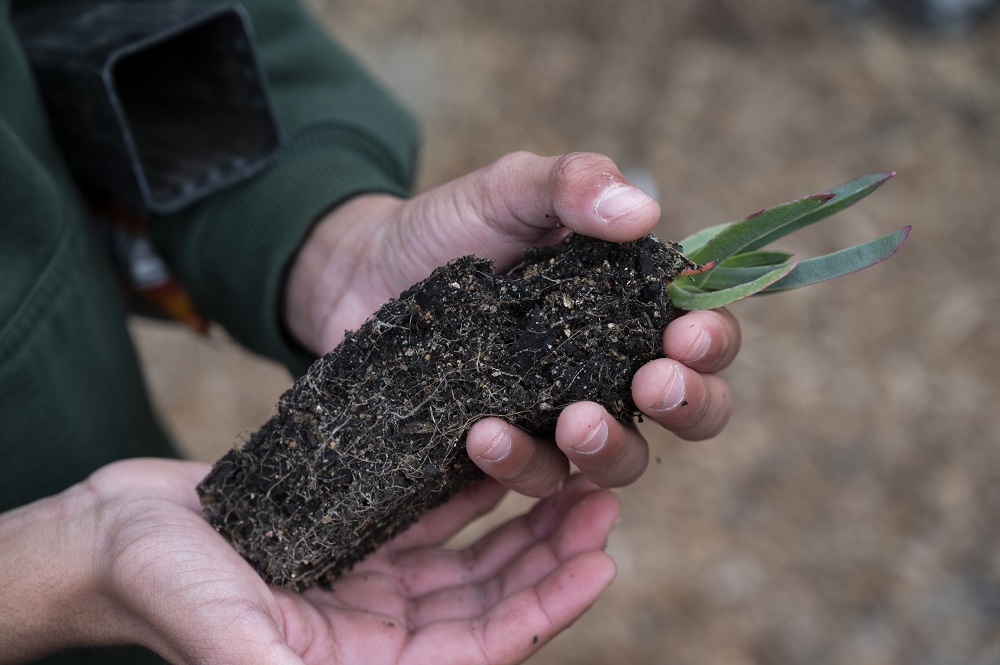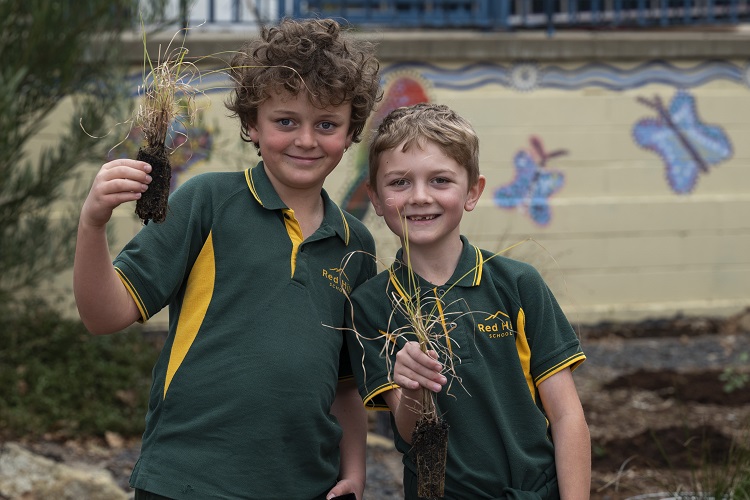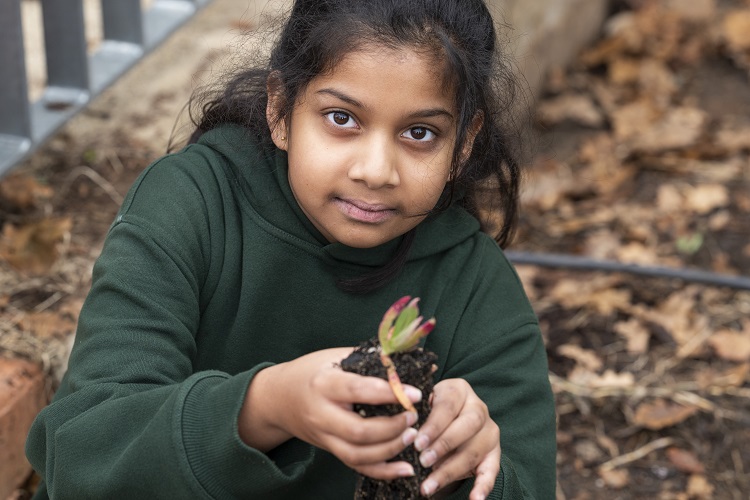
One of the schools more recent projects is a bush tucker garden, which the Dingoes recently replanted with the help of Adam Shipp from Yurbay.
07 July 2021
The Deadly Dingoes at Red Hill Primary School are a group of kindergarten to year-six children who are passionate about seeing their Aboriginal and Torres Strait Islander culture reflected and celebrated at their school.
From raising money for flag poles at the school’s entrance so the Aboriginal and Torres Strait Islander flags can be displayed, as well as on-country walks and Indigenous artworks, these students and their teachers have big ideas for their school and work hard to make them a reality.
One of the schools more recent projects is a bush tucker garden, which the Dingoes recently replanted with the help of Adam Shipp from Yurbay.
The children listen intently as Adam tells them about the different plants in their bush tucker garden. They’re excited as they pick a plant, ready to put it in the ground.
“I like planting different things,” said one student, Sarah.
“I like digging,” said her classmate Oliver. “And I like putting the plants in!” added George.
For Adam, teaching the children about the landscape we live in, what’s here and what’s sacred, is a real passion.
“I have worked with the students to learn about significant cultural sites, how to identify local bush food and medicine, and building respect for culture,” Adam said. “We learn about cultural plants, land management practices and protecting cultural sites.
“I think the gardens will help inspire the next generation to connect with Indigenous culture and build a further appreciation of our bushland. I think it’s important to start early, working with kids to build their knowledge from a young age about Aboriginal culture. I find the kids are really interested and interact well, because they take ownership.
“It’s really important for us to share this knowledge, especially with our young children, to get a better appreciation of our culture and how these plants have been used for so long.
“My interest in bush tucker sparked when I started a traineeship at the Parks and Conservation service, working with Ngunnawal elders and Aboriginal rangers. I began to learn off the Indigenous elders and wanted to pass this on.
“To date I have worked with and visited over 40 schools in the region. For me, in school, we never learnt about our own culture, so that’s one of the things that really drives me.”

Year-two teacher Claire Hansen says she is proud of the initiative shown by the Dingoes, and loves being able to share these experiences with the children.
“This school has a proud history of having Aboriginal and Torres Strait Islander student and teacher action groups, and we’ve done a lot of different things over the years to reflect this culture,” Claire said.
“A lot of the things that have happened around the school have come from our student action group who are really active in coming up with great ideas and raising funds to make them a reality.
“This indigenous garden is one example where the kids told us how they want to see their culture reflected in the school. They plant the garden and they will also maintain it by watering it and protecting the plants.
“We also wrote a new Acknowledgement of Country for the school that the kids came up with themselves, and of course we always plan additional activities during NAIDOC Week and Reconciliation Week, including the Great Book Swap, which is all run by the kids.”

An Indigenous mural is also being planned for later in the year to complement the bush tucker garden, painted by one of the parents at the school, Kristie Peters.
